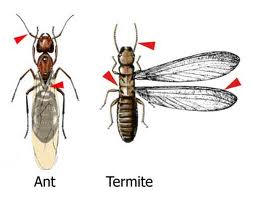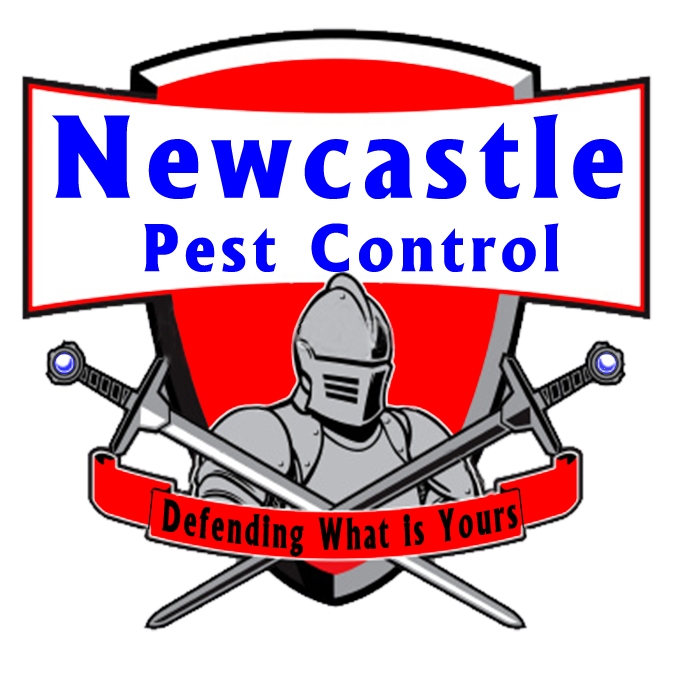|
Newcastle
Pest Control
-
100% Money Back
Guarantee |
 Your
Termites will be gone...
Guaranteed* Your
Termites will be gone...
Guaranteed*
WARNING No 1:
Talk
to one of our accredited termite
experts before any quote is
accepted... don't take chances
get a no obligation second
opinion...
WARNING No 2:
If you have
just found termites DO NOT
touch them, spray them or move
them. Leave everything as it
is. It makes it far easier for
us to track them down and
eliminate them correctly if we
can see them...
What to Do:
-
If you
are sure you have termites
just get one of our termite
experts to come and have a
look, they will let you know
on the spot what your
options are and provide a
no-obligation quote.
-
If you
are not sure if you have
termites you
really need to get a Termite
Detection Report that will
tell you what you have,
where they are and what your
options are. The report
costs $280 (or $100 if
combined with a general pest
treatment). It is
recommended in the
Australian Standards to get
one of these reports every
year for your property.
For
FREE
termite quotes call
Ph
1300 104 599 or
book online
Prices
Termite
Inspection &
Report, Termite
Treatments
|
|
Termite
Inspection &
Report AS 3660 |
|
2 hours |
$280.00 |
|
FREE Termite
Treatment Quotes |
|
30 mins |
Free |
Pre Purchase
Inspection &
Report
|
|
Pre-purchase
report in
accordance with
AS 4349.3 |
|
2 hours |
$280.00 |
Termite
Inspection +
General Pest
Treatment
|
|
Termite
Inspection +
House Pest
Treatment (up to
4 bdr) |
|
120 mins |
$280.00 |
|
Termite
Inspection +
House Pest
Treatment (4 bdr
plus) |
|
150 mins |
$varies |
Termite
Treatments
- Call for Free
Quotes...
however
treatment costs
can range
between $1,500 -
$2,500+ for
installation and
12 months of
monitoring and
inspections.
|
Common termite questions
Worried
about termites? Here are some
answers to common questions.


 LEARN
ABOUT TERMITES LEARN
ABOUT TERMITES
Identifying Termite Species
Coptotermes
Coptotermes acinaciformis is
found throughout mainland
Australia and causes more damage
to property than any other
species. It is aggressive in its
search for food and will attack
many items other than wood in
its search for cellulose
materials. It will damage wall
lining boards, electrical wiring
and even personal possessions.
Colonies often nest in trees or
stumps but can form nests
without ground contact.
Nasutitermes
Soldier termites of these
species are distinguished
by their pointed heads.
Nasutitermes exitiosus usually
builds a low mound and is more
common across Southern
Australia. Nasutitermes walkeri builds
part of its colony as a nest on
the branch of a tree; the rest
is constructed in the ground
beneath it. This genus will
mainly attack hardwood such as
that found in fences and timber
decking.
Mastotermes
Mastotermes darwiniensis, the
Giant Northern Termite, is the
most primitive of the
commercially significant
species. It shows an ability
for sub-colonies to split from
the main colony and produce
queens, without a mating
flight. Eventually a network of
interconnecting sub-colonies is
established, which makes control
difficult. These large termites
can devastate buildings,
bridges, poles, trees and crops
such as sugarcane. Mastotermes
is found mainly north of the
Tropic of Capricorn.
Schedorhinotermes
Schedorhinotermes can cause
damage approaching the severity
caused by Coptotermes. They
build fragile nests in places
such as old tree trumps, in
timber buried in the ground, in
filled patios and under
fireplaces. The damage they
cause is distinctive. Although
it can be severe it is often
patchy, with huge gouges taken
out of sound timber,
particularly around nails in
floor boards or other timbers.
Schedorhinotermes colonies
contain major and minor
soldiers.
Heterotermes
Heterotermes spp. Are a
significant structural pest
through Queensland, northern WA
and the NT. It is only in
southern Australia where they
are a minor nuisance. They are
generally considered to do
little damage to timber in
service, restricting their
attention to weathered timber
fences, decking and posts.
Occasionally they can cause
superficial damage to sound
timber.
Subterranean
Subterranean termites live in
colonies in the soil. They
require moisture from the soil
to survive, and can tunnel
hundreds of meters to reach
feeding sites. To reach food
above ground, they build mud
tubes to protect them from
exposure to light, air and
enemies.
Drywood
Found
coast to coast. Drywood termites
live inside dry wood. Their
colonies can be dispersed within
your home and can spread,
infesting more than one area.

Termite
detection: What are some signs
of termites?
Unless
there are signs of active
termite infestation, you
probably won’t detect termites
because they forage and hang out
hidden from view. The most
common way of detecting termites
include discarded wings. Not so
obvious signs include wood that
sounds hollow when tapped,
cracked or bubbling paint and
termite droppings that look like
sawdust (frass). You may also
see mud tubes that look like the
image pictured above.
What do
termites feed on?
They feed
on cellulose-based material like
wood, books, boxes, furniture
and drywall coverings. Termites
are constantly foraging and have
been found over 50m from a
colony.
Why are
termites a threat to my home?
Termite
colonies work 24 hours a day,
and signs of termite
infestations can go undiscovered
until serious damage is done.
Because homeowners insurance
typically does not cover termite
damage, termite detection and
continued termite treatment are
the best ways to help protect
your property.
For
additional help with detection,
read about how to identify
termite risk areas around your
home.

Signs of
Termites
Here are
some common methods for
detecting termites:
Wood Damage
The pattern in which
subterranean termites
feed on a piece of wood
is hard to miss. These
cellulose-loving insects
can leave nothing behind
but the wood grain.
However, termite damage
is usually hidden, due
to the insects’ habit of
eating the wood from the
inside out.
|
Discarded Wings
Even if you miss an
exterior termite swarm,
it may not be difficult
to see that it took
place. Soon after
swarmers take flight,
they shed their wings,
leaving small piles of
wings behind in spider
webs and on surfaces
around the home’s
foundation.
|
Termite Swarmers
Swarmers from mature
colonies typically
spread their wings and
leave their colonies in
the springtime in order
to start new colonies.
Swarms on the exterior
of a home may be missed
by homeowners, as they
are typically brief
events during the
morning or afternoon — a
time when many of people
are not at home.
Formosan termites can
also swarm at dusk.
|
Mud
Tubes
Subterranean termites
build mud tubes (also
known as shelter tubes)
to serve as bridges
between their colony and
the wood they are
feasting on. These tubes
are made of tiny pieces
of soil, wood and
debris, and are used to
protect the colony from
predators and conserve
moisture.
|
Termite Mounds
While termites in the
Australia cause billions
of dollars in damage
every year, termites
that construct their
colonies above ground
live primarily in Africa
and Australia.
|
Termite Droppings
Because termites don’t
have the luxury of
indoor plumbing, drywood
termites often leave
behind frass or
droppings. These tiny
fecal mounds often mean
the wood above is
infested with termites.
|
Termites: Facts,
Identification & Control
Termites and Termite
Prevention
Since
termites are a constant
threat to your home, here
are some things you can do
during the year to help
maintain the effectiveness
of your termite treatment
plan.
What Can You Do to
Help Protect Your Home?
Small
steps make a big difference
in termite prevention and
sustaining an effective
termite treatment plan.
Start by eliminating
moisture conditions and food
around your home. These
simple steps make your home
a less attractive target,
helping deter termites.
Eliminate
Moisture Problems
-
Repair leaking
taps, water
pipes, and a/c
units
-
Divert water
from foundation
-
Keep gutters and
down-spouts
clean
-
Remove excessive
plant cover and
wood mulch
-
Get rid of
standing water
on roof
-
Keep all vents
clear and open
-
Seal entry
points around
water and
utility lines or
pipes
Remove Food
Sources
-
Keep firewood,
lumber, or paper
away from
foundation or
crawl space
-
Get rid of
stumps and
debris near
house
-
Place screens on
outside vents
-
Check decks and
wooden fences
for damage
-
Wood on your
home shouldn’t
contact the soil
Termite
Warning Signs &
Identification
Some indications you
may have a termite
infestation:
-
A temporary
swarm of winged
insects in your
home or from the
soil around your
home.
-
Any cracked or
bubbling paint
or frass
(termite
droppings).
-
Wood that sounds
hollow when
tapped.
-
Mud tubes on
exterior walls,
wooden beams, or
in crawl spaces.
-
Discarded wings
from swarmers.
|
|
Newcastle Pest Control
- 20 Years of Termite
Experience Counts ! |
 The
Home of Happy Clients! We keep
our clients happy and satisfied
by being honest, hardworking and
doing things right... the first
time. The
Home of Happy Clients! We keep
our clients happy and satisfied
by being honest, hardworking and
doing things right... the first
time.
Newcastle Pest Control
Ph
1300 104 599
Merewether NSW 2291

|












|